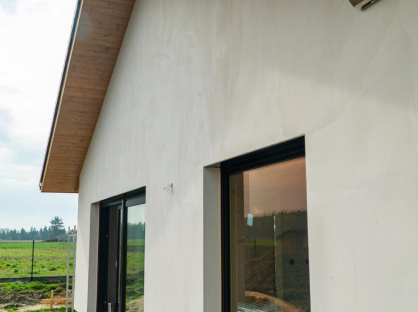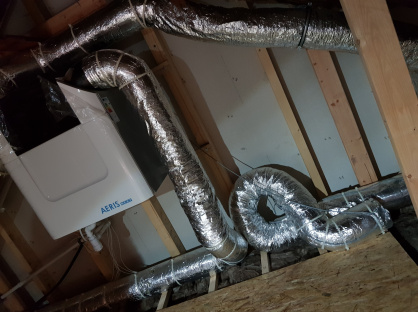
Heat Recovery Ventilation: an investment in health and savings
Recuperation with heat recovery is one of the solutions that is gaining in popularity year on year among owners of modern houses and flats. There is a good reason for this - the system combines ecological and economical advantages and, above all, has a positive impact on the quality of life of the inhabitants. In this post, we will take a closer look at what heat recovery is, why it is worth using it, what benefits it brings, as well as dispel some of the myths associated with it.
What is heat recovery?
Heat recovery recuperation is the process of exchanging air inside a building with the outside, where heat is recovered from the extracted air. In this way, even on the coldest days, the fresh air supplied to the interior is already heated, resulting in significant energy savings. A recuperation system consists of an air handling unit with a recuperator, air ducts and outlets and diffusers.
Why use recuperation?
Advantages of recuperation with heat recovery:
Energy savings: By recovering heat from the extracted air, the need for additional heating is reduced, resulting in lower energy bills.
Improved air quality: The recuperation system ensures a constant supply of fresh air while filtering it of pollutants, pollen and even viruses and bacteria, which is particularly important for allergy sufferers and asthmatics.
Thermal comfort: With recuperation, you can maintain a constant room temperature, eliminating the problem of draughts or cold air coming in from outside.
Eco-friendliness: Recuperation systems contribute to a reduction in CO2 emissions due to lower energy consumption for heating, making them environmentally friendly.
Potential costs:
Investing in a heat recovery recuperation system requires an initial financial outlay, depending on the size of the building and the quality of the equipment used. However, the reduction in operating costs and the possibility of obtaining funding from environmental programmes significantly reduce the payback period.
Dispelling myths:
"Recuperation is complicated to operate": Modern recuperation systems are equipped with automatic controllers, making their operation intuitive and requiring no specialist knowledge.
"It's dry in homes with recuperation": A correctly designed and installed recuperation system maintains the optimum humidity level in the rooms, so that the air is neither too dry nor too humid.
"Recuperation is only for new homes": Although the installation of a recuperation system is easiest during the construction of a house, it is also possible to retrofit older buildings.
BOX HAUS houses are fitted with recuperation systems as standard, i.e. mechanical ventilation of the house with heat recovery. In a traditional gravity ventilation system, the air exchange in the house looks like this: unheated air from outside flows in through, for example, ventilators in the windows or tilting the windows, and is then heated in the house. The warm air rises into the ventilation ducts (installed at the construction stage) and escapes to the outside of the building. There are no filters, no heat recovery, no humidity control. In summary: the money spent on heating the air in the building, escapes to the outside.
This is why BOX HAUS houses use mechanical ventilation with heat recovery (for simplicity: recuperation). The air is drawn in through the intake, enters the recuperator, passes through a filter and is preheated by a heat exchanger. The air is then supplied through ducts to the so-called 'dry' rooms: living room, dining room, bedroom. Already in the rooms, the air is heated to the desired temperature by any heating system the customer chooses. The air from the so-called 'wet' rooms, i.e. the kitchen and bathroom, is drawn into separate ducts. It passes by the heat exchanger in the recuperator and gives up its heat, and is then exhausted outside the building.
Recuperation with heat recovery is a technology that combines many advantages - from financial savings, to improved air quality, to ecological aspects. It is worth considering its use in both newly built and existing homes, bearing in mind that the system is tailored to individual needs and the specifics of the building. The investment brings long-term benefits, not only in terms of material, but also in terms of health and the environment, making it worthwhile on many levels.



